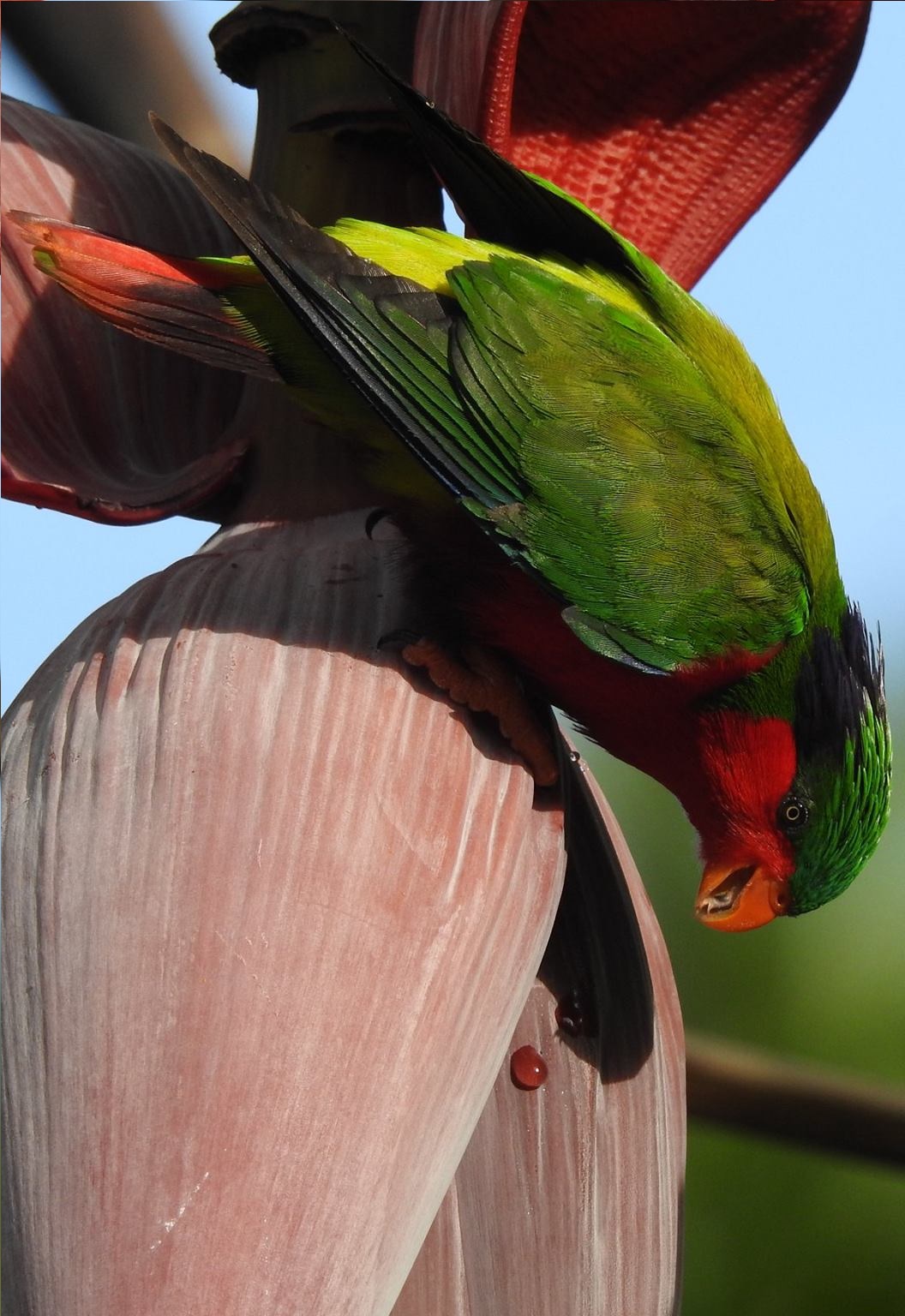Local Lorikeets Celebrated
World parrot day celebrated earlier this week on May 31st gives us a good excuse to bring more attention to a couple of our own brightly coloured lorikeets that come under the parrot family.
Ravishing in red the Kura, Rimatara lorikeet (Vini kuhlii) found on Atiu has an interesting history to tell. Fossil records confirm these cute lorikeets were once found on most of the Southern group islands in Cook Islands. In colonialist times the Kura was prized for its small red feathers which were used for chiefly embellishments such as the Atiuan ariki headpieces. This tradition was also the same for those chiefs present on Tahiti and Societies Island where the Kura or Ura as it was called, was also found.
Captain Cook’s visit in 1770s was the last oral record of the Kura being present in the Cook Islands. By the time the missionaries arrived in the 1820s there was no record of the Kura being observed. The extirpation of the Kura some 200 years ago, was largely associated with the cultural demands for their beautiful red feathers. The colour red still stands strong today, with Atius sports colour also being red.
Having lost the Kura within the Cook Islands a collaborative effort was made among the Natural Heritage Trust, Te Ipukarea Society, The Ornithological Society of French Polynesia and the Zoological Society of San Diego to reintroduce the Kura back to Atiu where it was once found. The translocation of Kura or Ura from Rimatara, French Polynesian took place in 2007. A total of 27 Kura were introduced to repopulate the island.
The new red feathery lorikeets to the island of Atiu were real explorers and within the first two months of their arrival, it was found that four Kura had crossed the ditch and flown to the neighboruing island of Mitiaro some 50 km away. Mitiaro is unfortunately home to ship rats, which are one of the key threats to nesting Kura. It appears that the new population to Mitiro were not able to repopulate, and have not been seen in recent years. Atiu, fortunately, does not have ship rats making Atiu an ideal island to reintroduce the Kura.
The Kura which loves feasting on nectar from banana trees has not had a comprehensive recent population count. However, both experienced local and visiting birders estimated a healthy population in excess of 1000 at the present time
Winging across to the Island of Aitutaki you'll find our second lorikeet being the pretty blue and white nunbird or Kurāmo’o (Vini peruviana). The Kurāmo’o was introduced to Aitutaki from Tahiti during the time of the missionaries around 1899. It was believed that the missionaries saw the small blue and white Vini of Tahiti as the perfect caged gift for the Aitutakian chiefs. Today, you are likely to spy a Kurāmo’o hanging around banana plots, where they love to feed on the sap of the banana flower. Comparing Tahiti and Aitutaki, it is believed that Aitutaki now holds the largest Kurāmo’o population. Like Atiu it is also assumed that Aitutaki is ship rat-free. Ship rats are known to be more ecologically damaging in comparison to the Pacific rats which are found on Aitu and Aitutaki. The ship rats are also known as better tree climbers compared to the Pacific rats making them ideal hunters for nesting lorikeet birds. The Kurāmo’o is also our reigning bird of the year champion from 2021 (there was no competition in 2022)
The Kurāmo’o is now estimated to have a population of over 1000, though a dedicated updated survey is required for more accuracy.
Today, one in three parrots, including lorikeet species, are threatened in the wild due to habitat loss, trapping for the pet trade and other human generated threats. Here in the Cook Islands invasive species such as ship rats have been the major threat to our nesting lorikeets. Ensuring cargo coming onto Atiu and Aitutaki are properly checked for illusive invaders such as ship rats is key to the conservation and survival of our two special lorikeets.

